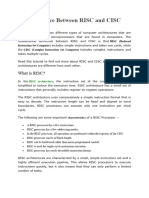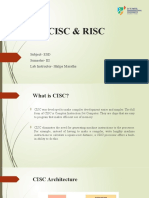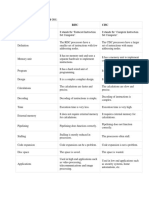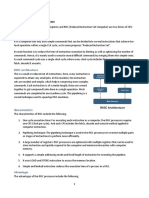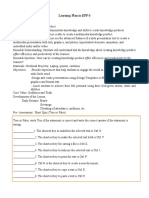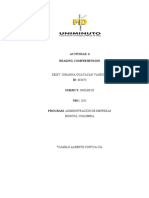0% found this document useful (0 votes)
6 views2 pagesRISC Vs CISC Differences
RISC architecture emphasizes a small set of simple instructions for faster execution and efficiency, making it ideal for performance-critical applications. In contrast, CISC architecture utilizes a larger set of complex instructions to reduce program size, but this increases hardware complexity and can hinder pipelining efficiency. Overall, RISC is simpler and more efficient, while CISC offers more functionality per instruction at the cost of increased complexity.
Uploaded by
jlu08082Copyright
© © All Rights Reserved
We take content rights seriously. If you suspect this is your content, claim it here.
Available Formats
Download as PDF, TXT or read online on Scribd
0% found this document useful (0 votes)
6 views2 pagesRISC Vs CISC Differences
RISC architecture emphasizes a small set of simple instructions for faster execution and efficiency, making it ideal for performance-critical applications. In contrast, CISC architecture utilizes a larger set of complex instructions to reduce program size, but this increases hardware complexity and can hinder pipelining efficiency. Overall, RISC is simpler and more efficient, while CISC offers more functionality per instruction at the cost of increased complexity.
Uploaded by
jlu08082Copyright
© © All Rights Reserved
We take content rights seriously. If you suspect this is your content, claim it here.
Available Formats
Download as PDF, TXT or read online on Scribd
/ 2

















